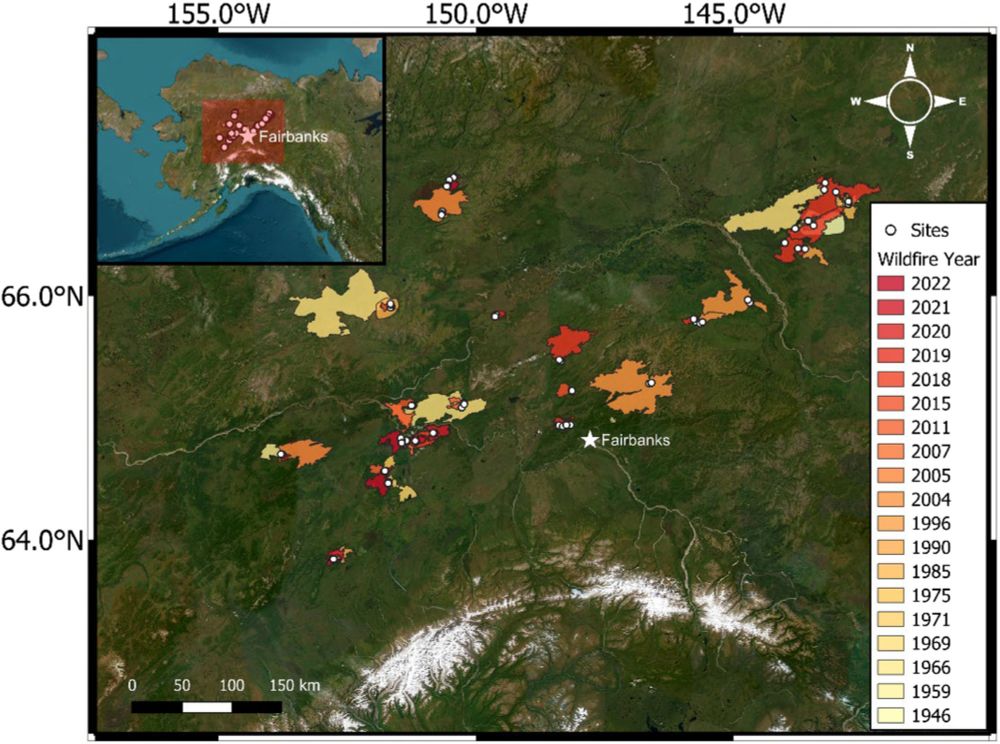Professor, University of Wisconsin-Madison; Co-editor in Chief of Ecosystems; works on forest ecology, fire ecology, disturbance dynamics, working landscapes, ecosystem services, ecosystem modeling. Likes biking, hiking and classical music. .. more
Professor, University of Wisconsin-Madison; Co-editor in Chief of Ecosystems; works on forest ecology, fire ecology, disturbance dynamics, working landscapes, ecosystem services, ecosystem modeling. Likes biking, hiking and classical music.
Monica G. Turner is an American ecologist known for her work at Yellowstone National Park since the large fires of 1988. She is currently the Eugene P. Odum Professor of Ecology at the University of Wisconsin–Madison. .. more
Reposted by Monica G. Turner, Lesley A. Hall



Whose ideas are you presenting as your own?
(Though the fatalist argument the authors make at the end of paper is disappointing/bizarre.)
Reposted by Monica G. Turner, Jonathan A. Foley


Reposted by Monica G. Turner

academic.oup.com/bioscience/a...
My review of Hutto's book, BioScience @aibsbiology.bsky.social
Severely burned forests are “magical places that seem to harbor plant & animal species & visual experiences found under no other forest conditions"
PDF: DM
🧪🌎🔥🌳🍁🌱 wildfire
Reposted by Monica G. Turner
Think of a person who wrote a paper you love, whose work influenced or helped you, or has made your professional life better.
Search up their email address. Shoot them a quick email of thanks. It means so, so much. This is a rough time of year, share some joy.
Reposted by Monica G. Turner, Dan Goldhaber, Julie L. Lockwood , and 17 more Monica G. Turner, Dan Goldhaber, Julie L. Lockwood, Mark J. Brandt, Seema Jayachandran, Lesley A. Hall, Naomi Priest, Joshua Goodman, Rebecca Williams, Ian Hussey, Trevon D. Logan, Aaron Sojourner, Trevor A. Branch, Christine Kooi, C. Kirabo Jackson, Mary Burke, Hayley Bennett, Evan Roberts, Laura E. Dee, Carly D. Ziter
Think of a person who wrote a paper you love, whose work influenced or helped you, or has made your professional life better.
Search up their email address. Shoot them a quick email of thanks. It means so, so much. This is a rough time of year, share some joy.
Reposted by Emilio Vilanova, Carly D. Ziter, Joan Dudney




#logging #ClimateChange #ForestFire

Reposted by Monica G. Turner, Juli G. Pausas

#logging #ClimateChange #ForestFire
Reposted by Monica G. Turner

Reposted by Monica G. Turner, Ben Bond‐Lamberty, Carly D. Ziter
Figured I'd ask if anyone had suggestions or strong feelings about what to get!
🧪🌎🌳🍁
@sgradywelsh.bsky.social (lab manager) would greatly appreciate any input!
Reposted by Monica G. Turner
Did you see where the President of Iran announced that the drought there is so bad that if they don't get any rain in the next two months they'll run out of water and *evacuate Tehran*?


Reposted by Monica G. Turner, Mary L. Dudziak, Andrew Baillie

Now, researchers may have identified the worrisome mechanisms behind it.
Within the Future Forests excellence cluster, we are hiring two modellers for 7 year (!) positions here in Freiburg.
A scientific coordinator role: uni-freiburg.de/en/job/00004...
And and a scientific programmer role: uni-freiburg.de/en/job/00004...
Reposted by Monica G. Turner

#Biodiversity #Woodpecker #DeadWood
Reposted by Monica G. Turner

Reposted by Michael E. Mann, Joanna Bryson, Brian J. Enquist , and 11 more Michael E. Mann, Joanna Bryson, Brian J. Enquist, Monica G. Turner, Ian J. Wright, Anthony Ricciardi, Pieter A. Zuidema, Randall A. Kramer, Dana R. Fisher, James Connelly, Tim Stephens, Andrea Santangeli, Julen Astigarraga, Olivier Villemaire-Côté
📄Simulated postfire tree regeneration suggests reorganization of Greater Yellowstone forests during the 21st century
doi.org/10.1002/ecs2...

Reposted by Monica G. Turner, Brian J. Harvey

📄Simulated postfire tree regeneration suggests reorganization of Greater Yellowstone forests during the 21st century
doi.org/10.1002/ecs2...
Reposted by Monica G. Turner

Learn more: https://scim.ag/4nhTQJa
Reposted by Monica G. Turner, Silvia Secchi, Michael B. Mahon

via @eenews.bsky.social

Reposted by Brian J. Harvey

Reposted by Monica G. Turner, Brian J. Harvey, Christina Dollinger

Reposted by Monica G. Turner, Ben Bond‐Lamberty


unc.peopleadmin.com/postings/307...

